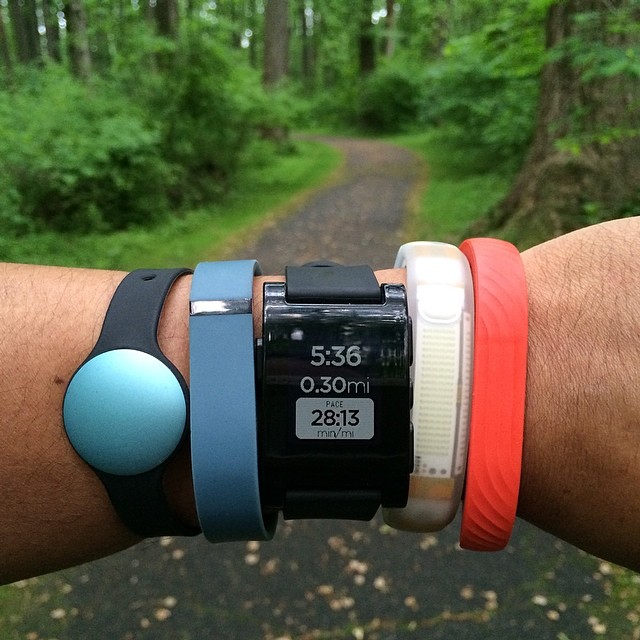In the wide and growing world of wearable technology, consumers face a number of decisions. Decisions on which device to buy are dependent on what the device claims to measure and the data it gives you in return. After landing on the wearable itself, we’re bombarded by apps and platforms to take the data and give us feedback. The choices are numerous, from the device’s proprietary app to GPS-aided running guides to calorie counters and beyond.
In facing these decisions, it really boils down to one question: why do (or should) people want wearable tech?
In a nutshell, what we all want is to harness the power of change to feel better, be healthier and live longer. Data from wearables and our smart phones gives us the “what” of the change equation by showing us how our activity adds up each day, while analysis give us the “how”.
2015 is looking to be a key evolutionary period for the current device race among wearables manufacturers, with the transition from primarily pedometer-based measurement tools to futuristic smart watches, accessories and clothing. While each device may still not measure everything every consumer wants, the technological capabilities and manufacturing maturity are bringing us closer.
The increasing capability to collect data will inevitability lead to more data being collected, helping flesh out part one of the actionable change process. But what are device manufacturers offering to tackle part two (the analysis)? Straight measurement can only incentivize us towards wellness for a while until we ask the questions, “What do these flashy online charts tell me that I don’t already know? What can I do to optimize the time, money and energy I’m spending on activity monitoring? What difference will my active lifestyle actions actually make for my future?”
Smart analysis using valid, research-based algorithms can provide answers to these questions. When such a system has the capability to look at trends and provide predictive advice outlining health risk and potential outcomes (as Vivametrica’s does), it defines a roadmap for a person’s actions towards change and a destination: the chance for reduced chronic disease risk and increased health. Additionally, systems that can factor in the interests and needs of the users will provide customized recommendations that are more useful and more achievable. The rule of thumb stating everyone should strive for 10,000 steps per day doesn’t and shouldn’t apply to everyone, whether you consider athletes who are too fit to find that number aspirational, or people with health and mobility issues that may strain themselves beyond their abilities in trying to reach that goal. The potential danger to users exists when they receive raw data, interpret it as prescriptive when it’s not taking their specific needs into account, and then may end up worse off as a result.
As we look to build smarter platforms that utilize the capabilities of the rapidly evolving wearable technology space, the optimal goal should be seamlessly integrating these measurement tools into people’s daily lives and providing meaningful information that helps them change for the better. Enacting smart analytics that take advantage of advanced measurement will lead to an outcome that is healthier for all.







[…] Using wearables for actionable change […]